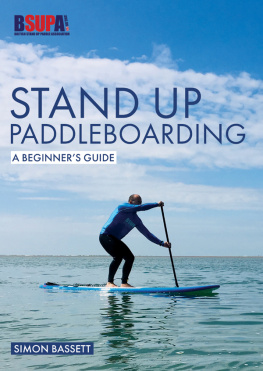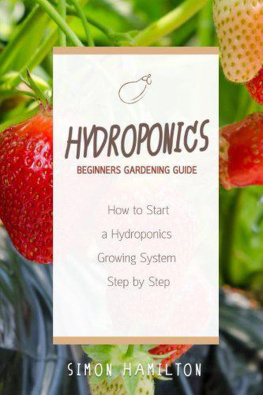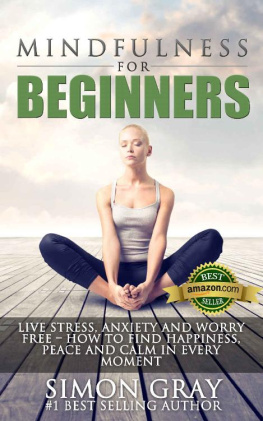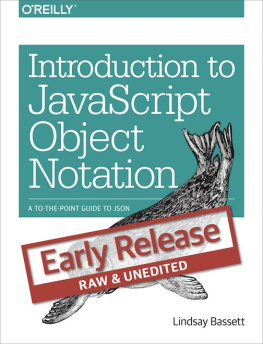Contents
Guide

CONTENTS

INTRODUCTION
Stand Up Paddleboarding (SUP) is a relatively new watersport. In the last 10 years it has exploded worldwide. Its growth has been driven by its accessibility to so many stretches of water from inland rivers, lakes and canals to coastal estuaries and surf locations.
SUP has transcended other watersports because it is so diverse: you can paddle on flat water, surf, tour, race, join a club or take a holiday with your SUP. You can also use SUP for fitness or yoga.
You can buy a board for every option in epoxy from 7ft (210cm) to 18ft (550cm). You can use one of many different models of inflatable board, pump it up, ride it and then pack it away into the size of large backpack and stick it into the boot of your car. You can take your dog out on a SUP, go fishing, ride white-water and even take the whole family on a Mega SUP.
My journey into SUP started in 2006 after hearing about Laird Hamilton crossing the English Channel on a new type of surfboard craft with a single-bladed paddle. Timo Mullen called me and said, Lets buy some boards!
I started to SUP on a tandem Surftech surfboard with paddles imported from Hawaii. At the time we were part of very small group of paddleboarders there were less than 10 in the UK. They were exciting times, lots of things happened very quickly. By 2007, the British Stand Up Paddle Association (BSUPA) had been set up after the first UK SUP contest in Watergate Bay. By 2008, Andy Gratwick and I had started developing the BSUPA teaching scheme and I had also run, with others, the first BSUPA National SUP series.
I hope this SUP Beginners Guide will help provide some basic knowledge, advice, technical tips and water safety to start you on a lifelong journey on the water with your SUP.
Simon Bassett

PADDLE, BOARD, LEASH
PADDLE
Adjust your paddle before you head out to around 6 inches (15cm) taller than yourself. Take a look at the diagram, which gives a guide to all terminology and how and where everything fits.


BOARD
Volume is the boards total cubic measurement measured in litres which supports your body weight.
When you place your board on any hard surface, such as land, the hull can dent or get damaged if there are sharp stones. Also take care with fins as these are prone to break.

Inflatable SUPs which have a valve and valve cover

Rigid SUPs which dont have a valve, but do have an air vent screw
LEASH
Your leash should be the same length as your board. Coiled for flat water, straight for surf.
Attach the leash to the board before carrying it, and to yourself at the waters edge the leash should be attached to your back leg. (Whichever foot you would naturally use to kick a football should be your front, or lead, foot so you put your leash on the other leg.)
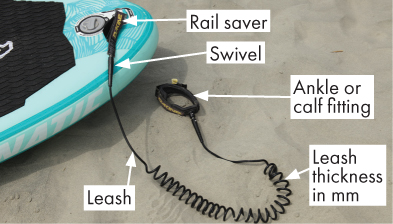
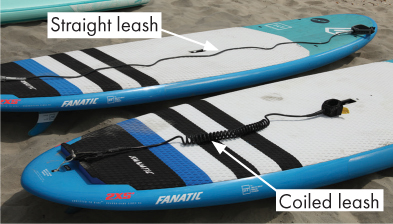
PADDLE GEAR
There is a vast array of water wear you can buy: your local SUP shop should be a help.
WETSUITS
Wetsuits suitable for the season is the general rule because hypothermia and cold-water shock are realities without the correct gear on the water. You can always peel down your suit if you get hot, rather than getting cold and wishing you had worn one out on the water.
A 5/4mm wetsuit thickness is ideal in winter and 3/2mm in summer. Most decent wetsuits are blind stitched and glued, so the seams dont let water in or out and are flexible.

Summer (left) & winter (right) wetsuits
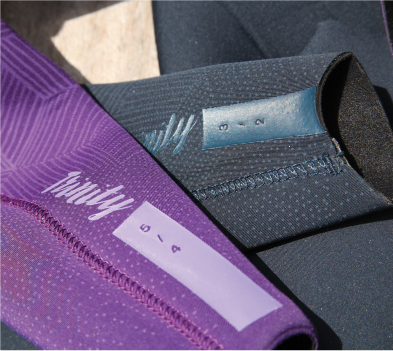
It is hard to tell the difference visually, but their thickness is marked
HANDS, FEET & HEAD
Booties and wet shoes are ideal for grip and keeping your feet from minor cuts and scratches; gloves and headwear depend on how cool or hot it is.
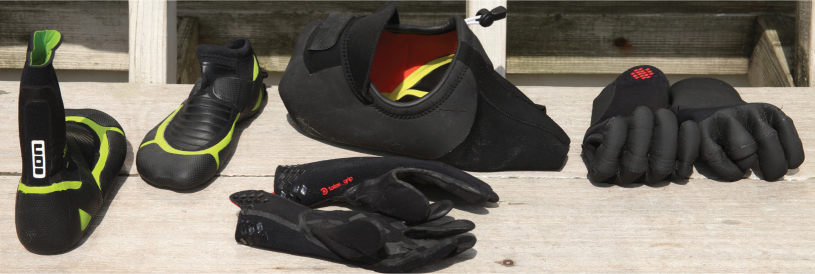
BUOYANCY AIDS
Buoyancy aids are an essential piece of gear to begin with, adding some warmth but, more importantly, giving floatation. Each buoyancy aid should have a CE mark with a weight guide. When you try on a buoyancy aid it needs to fit securely round your chest and not be loose on the shoulders. A flatter profile buoyancy aid is ideally suited to SUP as it makes it easier to get back on the board from the water.

A good fitting buoyancy aid
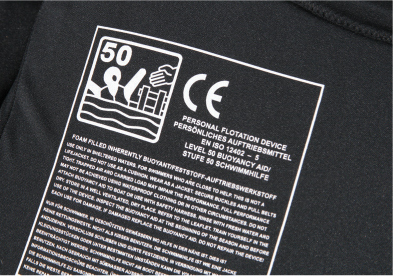
CE mark and weight guide on a buoyancy aid
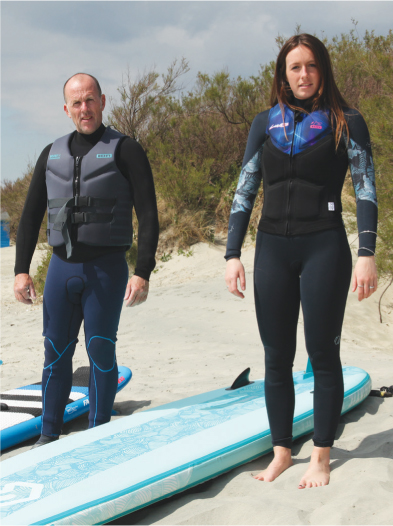
The complete kit
PERSONAL BELONGINGS
A waterproof bag is a good way to store your phone, car keys, spares and supplies. There are quite a few options including bum bags, phone-only bags, backpacks or dry wet bags. It is always best to store your main kit (i.e. phone) on your body rather than in a dry bag attached to the board.
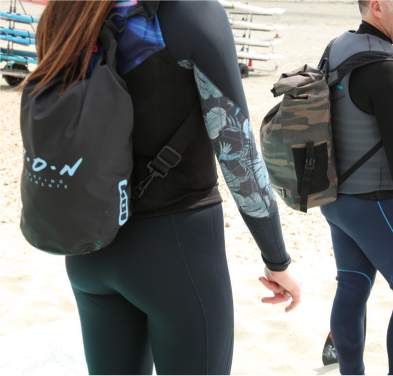
Waterproof backpacks
LAUNCH, PRONE, KNEEL, STAND, PADDLE
LAUNCH
Heading out for the first time, carry your board safely towards the waters edge holding the leash and then attach the leash to your back leg (see ). Avoid walking on land wearing your leash.

